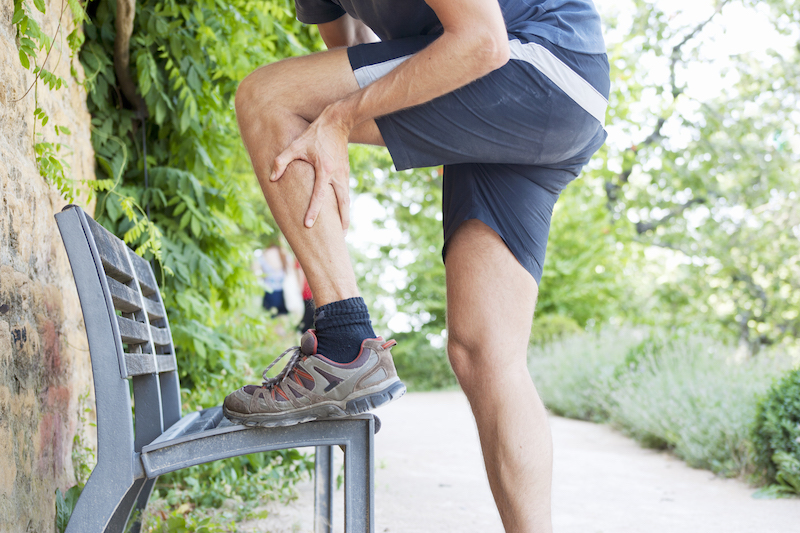Common Running Injuries & how Physiotherapy can help: Part 2
by Aki Nemoto
Following on from Part 1 (see previous blog post), Part 2 focusses on common running injuries to the lower leg and foot.
Shin Splints
What are They?
Shin splints refer to pain along the shinbone (tibia) caused by repetitive stress on the muscles and tendons in the lower leg. It’s a common overuse injury among runners, especially those who suddenly increase their training volume.
Main Symptoms:
- Dull ache along the shin, sometimes sharp and severe
- Pain worsens during or after exercise, especially running
- Tenderness along the lower shin
What Causes It?
Shin splints occur when the muscles in the lower leg are overloaded, often due to a sudden increase in training volume, running on hard surfaces, or poor biomechanics. Weak leg muscles can also contribute, as they fail to absorb the impact of running properly.
How Can Physiotherapy Help?
A physiotherapist can help address the root causes of shin splints by:
- Strengthening exercises: Targeting muscles in the lower leg, ankle, and foot
- Running technique analysis: To identify and correct biomechanical issues
- Manual therapy: Using massage or other techniques to release tight muscles
- Training modifications: Advice on adjusting your running routine or surface choices
Achilles Tendinopathy
What is it?
Patellofemoral pain, often referred to as runner’s knee, is a broad term for pain in the front of the knee, specifically where the kneecap (patella) meets the femur (thigh bone). The knee moves in a groove as it bends and straightens, and problems arise when this movement becomes misaligned or overloaded.
Main Symptoms:
- Gradual pain in the front of the knee, around the kneecap
- Pain worsens with activities like squatting, running, or climbing stairs
- In severe cases, swelling or tenderness around the knee
What Causes It?
The main cause of runner’s knee is overload on the knee joint. This can happen with sudden increases in running distance or intensity, weak muscles that can’t properly support the knee, or poor movement mechanics that misalign the kneecap during exercise.
How Can Physiotherapy Help?
Physiotherapy for runner’s knee focuses on identifying and addressing the underlying causes, such as muscle imbalances or poor running technique. Treatment may include:
- Tailored exercises: To strengthen weak muscles around the knee and hip
- Movement correction: Advice on modifying techniques and reducing activities that aggravate the knee
- Manual therapy: Targeted treatment to release tight muscles and improve joint mobility
- Taping: To provide support and reduce strain on the knee
Plantar Fascia Pain (formerly Known as Plantar Fasciitis)
What is it?
Patellofemoral pain, often referred to as runner’s knee, is a broad term for pain in the front of the knee, specifically where the kneecap (patella) meets the femur (thigh bone). The knee moves in a groove as it bends and straightens, and problems arise when this movement becomes misaligned or overloaded.
Main Symptoms:
- Gradual pain in the front of the knee, around the kneecap
- Pain worsens with activities like squatting, running, or climbing stairs
- In severe cases, swelling or tenderness around the knee
What Causes It?
The main cause of runner’s knee is overload on the knee joint. This can happen with sudden increases in running distance or intensity, weak muscles that can’t properly support the knee, or poor movement mechanics that misalign the kneecap during exercise.
How Can Physiotherapy Help?
Physiotherapy for runner’s knee focuses on identifying and addressing the underlying causes, such as muscle imbalances or poor running technique. Treatment may include:
- Tailored exercises: To strengthen weak muscles around the knee and hip
- Movement correction: Advice on modifying techniques and reducing activities that aggravate the knee
- Manual therapy: Targeted treatment to release tight muscles and improve joint mobility
- Taping: To provide support and reduce strain on the knee
Preventing and Managing Running Injuries
If you’re dealing with any aches, pains, or injuries from running, consulting a physiotherapist early can help you avoid prolonged discomfort and ensure a faster recovery. At our clinic, we can assess your injury and tailor treatment to your specific needs, helping you get back on the path to injury-free running.
You may also find it useful to consult a Podiatrist for some of the above conditions including assessing you for personal orthotics where applicable. Your physiotherapist can advise and refer you to our in-house Podiatrist.
We hope this guide has given you useful insights into common running injuries and how physiotherapy can help. If you have any questions or need further advice, please don’t hesitate to get in touch with our team.
************
Aki Nemoto graduated with a Doctor of Physiotherapy degree from the University of Melbourne in 2019. Since then, she has gained valuable experience working in private practices in Melbourne, where she led Clinical Pilates classes and treated a range of general and sporting injuries.
To find out more about how we could help you or to book an assessment, please call our Reception Team on 020 8876 5690.








